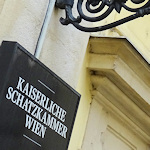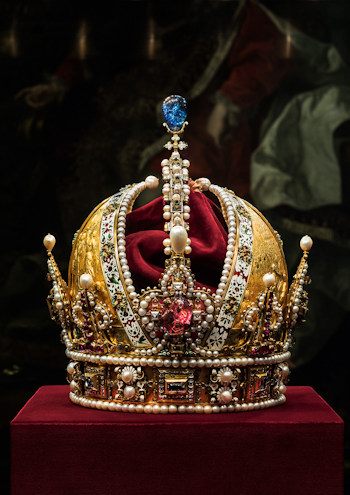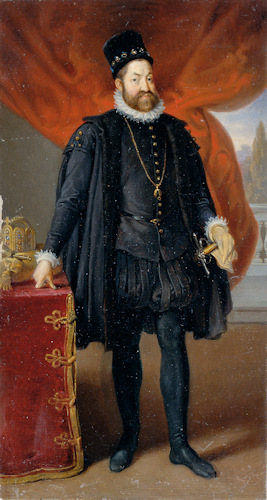
No self-respecting monarch goes about their business without a suitable hat. And the crown of the Austrian empire could not be more imperial if it had the word, Emperor, inscribed on it (which, incidentally, it does)…
- Private crown made in 1602 for Emperor Rudolf II
- Rich with gold, pearls and diamonds
- Became the official crown of the Austrian Empire
- Book a historical walking tour* in Vienna
- See also:
The crown of Rudolf II

(The Crown of Rudolf II, later Crown of the Austrian Empire, Jan Vermeyen, Prague, 1602 ©KHM-Museumsverband)
When it comes to impressive artefacts, Vienna’s Schatzkammer (Imperial Treasury) is like a chocolate shop to a child: delights everywhere and hard to say what you should pick first.
Ultimately, though, when it comes to imperial treasures…it has to be a crown.
Now, the imperial crown of the Holy Roman Empire probably counts as the most impressive from a historical perspective. The Reichskrone is, after all, over 1,000 years old and associated with such luminaries as Frederick Barbarossa and the great Maximilian I.
But my eye falls instead on what is known as the Rudolfskrone.
This is not pragmatic headgear. Do not expect a bit of spiky metal you might toss around the throne room or wear out to dinner after a fresh conquest.
No, this crown oozes imperial self-confidence layered in gold and gemstones.
The crown makes it very clear indeed that the wearer is most definitely more important than anyone else in the room. A crown that leaves you with an urge to kneel, however republican your sentiments.
Brussels-born goldsmith, Jan Vermeyen, made the item in 1602 for Emperor Rudolf II (1552 – 1612) at the latter’s Prague court.
Vermeyen’s creation had no official function as such, at least not until the founding of the Austrian Empire by Emperor Francis II/I in 1804. Then his creation became formally designated as the Imperial Crown of Austria.
Rudolf does not count as one of the greatest Habsburg rulers, but he was certainly one of the greatest Habsburg collectors (and a huge patron of the arts).

(A portrait of Emperor Rudolf II by Johann Peter Krafft from around 1840; photo: Belvedere Wien; reproduced with permission under the terms of the CC BY-SA 4.0 license)
Many of the wonderful pieces in the Kunstkammer chamber of wonders at Vienna’s Kunsthistorisches Museum stem from Rudolf’s collection, for example. Other Vermeyen works also appear there, such as a rhino horn drinking vessel.
As for the Rudolfskrone, this astonishing example of the goldsmith’s art works like a hybrid between a more conventional circlet and a bishop’s mitre. It thus combines the secular and divine aspects of the monarch.
Pearls and diamonds decorate the circlet and central arch, the latter topped by a huge sapphire. The golden mitre depicts four aspects of Rudolf’s position in relief:
- Victor over the Ottomans (a somewhat dubious claim for Rudolf personally)
- Coronation as emperor
- Scene from the coronation as King of Bohemia
- Scene from after the coronation as King of Hungary
Incidentally, a copy of the crown resides in the Michaelerkirche church. A tour of the crypts there includes a peek at this simplistic replica, which would have adorned the coffin of an emperor when lying-in-state.
How to get to the Imperial Crown
First, find your way to the Imperial Treasury in the Hofburg complex. Once inside, it’s hard to miss. In fact, this is one of the very first exhibits you’ll see, displayed alongside an orb and sceptre. Look at the wall opposite for an 1832 painting of Emperor Francis II/I in full regalia with the crown on his head.
Address: Schweizerhof, Hofburg, 1010 Vienna | Website